Photo Gallery for Cameraria aceriella - Maple Leaf Blotch Miner Moth | 64 photos are available. Only the most recent 30 are shown.
|
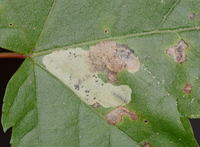 | Recorded by: Jim Petranka, Becky Elkin and Bo Sullivan on 2023-08-08
Wilkes Co.
Comment: | 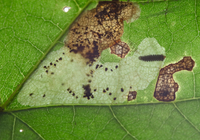 | Recorded by: Jim Petranka, Becky Elkin and Bo Sullivan on 2023-08-08
Wilkes Co.
Comment: |
 | Recorded by: David George, Stephen Dunn, Jeff Niznik, Rich Teper, Becky Watkins on 2023-07-29
Swain Co.
Comment: |  | Recorded by: Jim Petranka and Becky Elkin on 2022-10-24
McDowell Co.
Comment: Occupied mines with niduses were on Red Maple. |
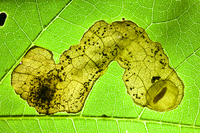 | Recorded by: Jim Petranka and Becky Elkin on 2022-10-24
McDowell Co.
Comment: A backlit image on Red Maple with a nidus. | 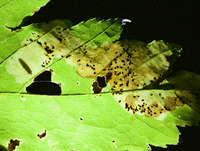 | Recorded by: Jim Petranka on 2022-10-09
Buncombe Co.
Comment: |
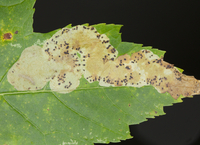 | Recorded by: Jim Petranka and Becky Elkin on 2022-10-04
Transylvania Co.
Comment: |  | Recorded by: Jim Petranka and Becky Elkin on 2022-09-15
Caldwell Co.
Comment: |
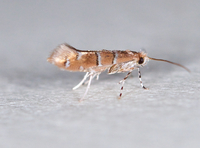 | Recorded by: Jim Petranka on 2022-07-29
Buncombe Co.
Comment: | 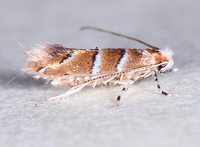 | Recorded by: Jim Petranka on 2022-07-23
Buncombe Co.
Comment: An adult that was reared from Red Maple; mine on July 7; adult emerged on July 23, 2022 (see companion photo of the mine). |
 | Recorded by: Jim Petranka on 2022-07-15
Buncombe Co.
Comment: | 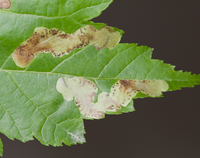 | Recorded by: Jim Petranka on 2022-07-07
Buncombe Co.
Comment: Occupied mines were on Red Maple. |
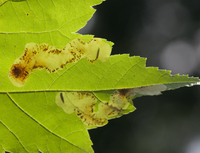 | Recorded by: Jim Petranka on 2022-07-07
Buncombe Co.
Comment: Occupied mines were on Red Maple. | 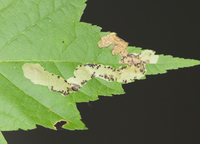 | Recorded by: Jim Petranka on 2022-06-17
Madison Co.
Comment: Occupied mine was on Red Maple. |
 | Recorded by: Jim Petranka on 2022-06-17
Madison Co.
Comment: | 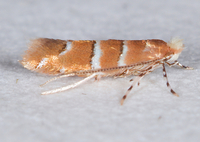 | Recorded by: Jim Petranka and Becky Elkin on 2022-04-18
Yancey Co.
Comment: A reared adult from a mine on Red Maple (see companion photo of the mine from 2021-08-26). |
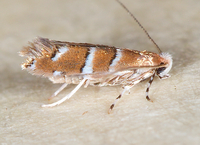 | Recorded by: Jim Petranka and Becky Elkin on 2022-04-03
Madison Co.
Comment: A reared adult from Red Maple; occupied mine on Sept 18, 2021; adult emerged on April 3, 2022 (see companion photo of the mine) | 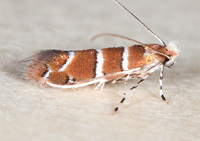 | Recorded by: Jim Petranka and Becky Elkin on 2022-03-26
Yancey Co.
Comment: Adult was reared from Red Maple; larvae on 26 Aug., 2021; adult emerged on March 26, 2022 after overwintering in refrigerator. |
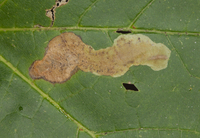 | Recorded by: Jim Petranka and Becky Elkin on 2021-10-14
Yancey Co.
Comment: |  | Recorded by: Jim Petranka and Becky Elkin on 2021-10-14
Yancey Co.
Comment: |
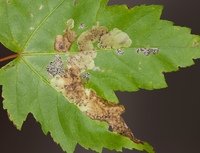 | Recorded by: Jim Petranka and Becky Elkin on 2021-09-24
Henderson Co.
Comment: |  | Recorded by: Jim Petranka and Becky Elkin on 2021-09-24
Henderson Co.
Comment: |
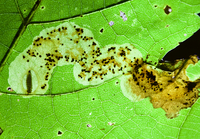 | Recorded by: Jim Petranka and Becky Elkin on 2021-09-22
Buncombe Co.
Comment: An occupied mine on Red Maple. | 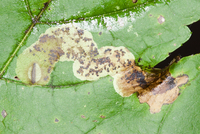 | Recorded by: Jim Petranka and Becky Elkin on 2021-09-22
Buncombe Co.
Comment: |
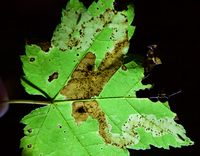 | Recorded by: Jim Petranka and Becky Elkin on 2021-09-18
Madison Co.
Comment: An occupied Red Maple leaf with two mature mines. | 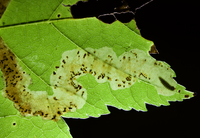 | Recorded by: Jim Petranka and Becky Elkin on 2021-09-18
Madison Co.
Comment: A backlit image of a Red Maple leaf with a feeding larva and frass deposited along the margins. Reared adult on April 3, 2022 (see companion photo). |
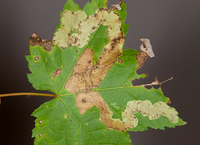 | Recorded by: Jim Petranka and Becky Elkin on 2021-09-18
Madison Co.
Comment: A backlit image of an occupied Red Maple leaf with two mature mines. | 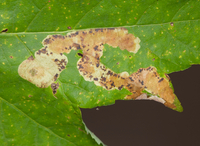 | Recorded by: Jim Petranka and Becky Elkin on 2021-09-12
Madison Co.
Comment: |
 | Recorded by: Jim Petranka and Becky Elkin on 2021-09-10
Transylvania Co.
Comment: Occupied mine was on Red Maple. | 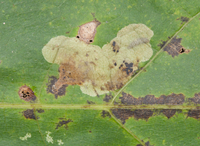 | Recorded by: Jim Petranka and Becky Elkin on 2021-09-10
Transylvania Co.
Comment: Occupied mine was on Red Maple. |
|